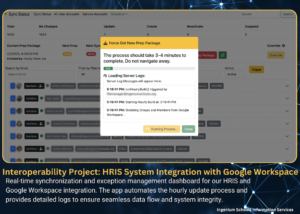Imagine waiting weeks for a new edtech tool to ‘play nice’ with your SIS. That’s why the newly released K–12 API integration standard is a game changer. In early June 2025, a coalition of districts and vendors launched an open specification—built on OAuth 2.0, JSON metadata schemas, and uniform endpoints—to simplify how classroom apps exchange data with core systems like PowerSchool and Infinite Campus. By adopting this standard, schools can now onboard new software in hours instead of weeks, reduce IT support costs, and keep data flowing seamlessly. This article dives into why this matters and how it paves the way for faster innovation.
Source: https://www.edsurge.com/news/2025-06-03-api-standards-help-schools-integrate-tools-faster-without-breaking-things
How It Works: Authentication, Rosters, and Reporting
Under the hood, the K–12 API integration standard ensures that any compliant tool can authenticate securely—no more customized SFTP scripts or wrestling with mismatched CSV files. When a new app wants student roster data, it uses OAuth tokens to request exactly what’s needed: student IDs, course assignments, and enrollment dates. On the reporting side, assessment results flow back through a consistent endpoint, formatted in JSON. Schools no longer need to jump through vendor-specific hoops or wait on custom code. That means if your district adopts a new learning platform, it can pull roster information directly—automatically and securely.
Early Wins: Hours, Not Weeks
Five pilot districts—Baltimore County, Houston ISD, Seattle Public Schools, Jefferson County (KY), and Clark County (NV)—are already seeing results. What used to take their IT teams two to four weeks now takes a few hours. With more than 50 tools signed on (including Clever, ClassLink, and EdFi), districts report near-instant data synchronization and fewer errors. The speed gain not only shortens implementation time but also frees up IT staff to focus on higher-value projects, like advanced analytics or process improvement.
A Shift from Custom to Compliant
Before this standard, each vendor had its own integration ‘flavor’—different REST endpoints, authentication quirks, and custom data models. That variability forced districts to build and maintain multiple custom connectors, which broke whenever a vendor updated software. The new K–12 API integration standard removes that overhead. Now, any tool that declares it’s compliant guarantees it speaks the same “language” as your SIS. It’s like swapping out analog phone lines for a universal digital protocol: you plug in, and it just works.
Why District Leaders Need to Act
If your district is evaluating new platforms—whether SIS, LMS, assessment tools, or niche apps—ask if they support the K–12 API integration standard. That single question can save months of rollout time and avoid hidden data headaches. By aligning with the standard, your IT department and vendors share a clear roadmap: authentication, data exchange, and reporting all follow the same playbook. It’s a shift that improves data reliability, reduces helpdesk tickets, and ultimately empowers educators to use tools without delay.
Ready to Future-Proof Your Data Ecosystem?
If you’re navigating how to implement the K–12 API integration standard or need guidance on broader data integration and quality processes, let’s talk. I help districts design systems that blend technology, process thinking, and quality frameworks to ensure your data ecosystem stays resilient and scalable. Together, we can turn what used to be a bottleneck into a launchpad for innovation. https://consulting.jayraguda.com




